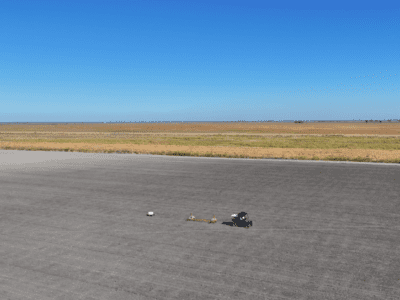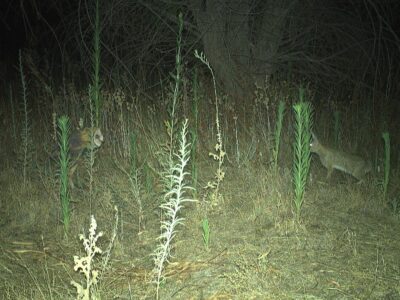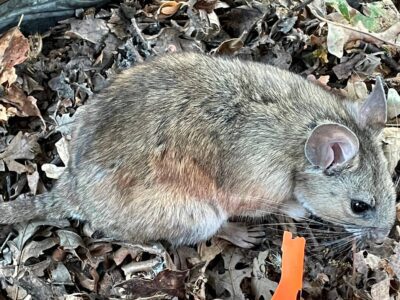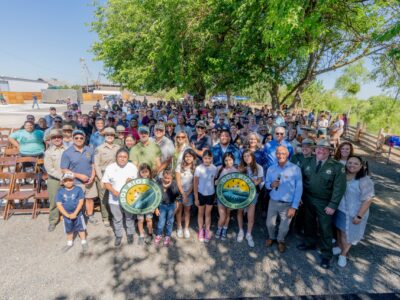River Partners is thrilled to announce that Governor Newsom’s revised state budget released in May reinstated $40 million in critical river-restoration funding to enhance ecosystems and communities throughout the San Joaquin Valley.
This downpayment on a brighter future for the valley will support River Partners’ efforts to restore the region’s floodplains to boost flood safety, increase water resiliency, support threatened wildlife, and much more.
With catastrophic flooding and prolonged drought predicted to grow in the coming decades, this funding represents an essential investment in building climate resiliency in the valley and beyond.

We thank all our allies and supporters who came together to voice the critical need for nature-based solutions, especially considering this year’s weather whiplash.
In particular, we thank former state Assemblymember Adam Gray, a longtime floodplain champion who played a pivotal role in garnering the bipartisan support required to reinstate the state funding.
“Water is the most precious resource we have in the San Joaquin Valley, and it can’t be overstated that we must take every effort to manage that resource carefully and strategically for communities, the environment, and economy,” said Gray. “I’m an ‘all of the above’ guy, and there’s no smarter investment that checks all the boxes than floodplains—from flood safety, to groundwater recharge, to public recreation, to wildlife. I’m extraordinarily pleased that the Governor not only reinstated the $40 million but added additional flood management funds to this year’s budget. Restoring our riverways demonstrates that everyone can win.”
Below, River Partners President Julie Rentner underscores why this funding is a critical downpayment on advancing nature-based solutions for a region that continues to be impacted by a changing climate.
Q&A with River Partners President Julie Rentner
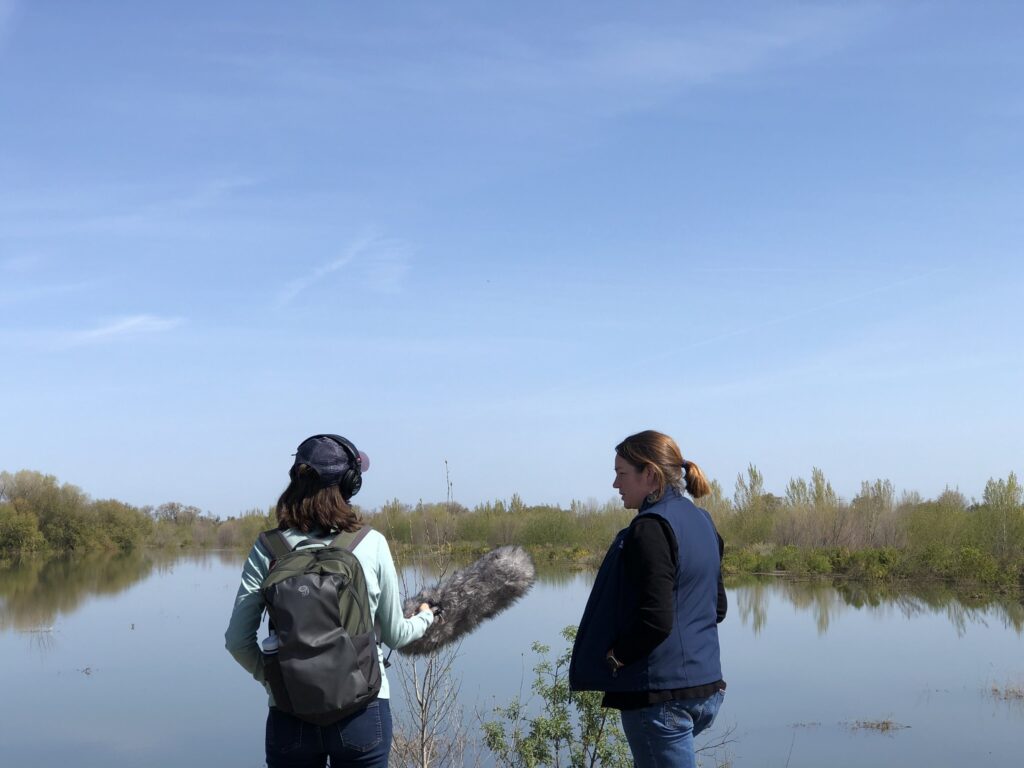
River Partners President Julie Rentner speaks to NPR climate reporter Lauren Sommer at our 2,100-acre flagship floodplain restoration, Dos Rios Ranch Preserve, near Modesto.
California experienced record-breaking drought and then record-breaking precipitation. Is this normal? How do we plan for climate whiplash?
Julie: California has always experienced highly variable precipitation. Historically, when you look back at tree rings of the Sierra Nevada, you can pinpoint gigantic droughts that lasted dozens of years, and periods of abundant water.
Those swings are going to get more extreme with our changing climate, especially in the San Joaquin Valley. It’s ground zero for climate extremes. It can go from desert conditions to a flooded lake in a matter of a few weeks.
While people struggle with this variability, our natural vegetation and wildlife are well-adapted to it. However, given the projected shifts toward more extreme wet and dry periods, it is crucial to have systems in place to manage water effectively. Floodplain restoration can do that. It provides a flexible and scalable approach to address California’s climate variability and prepare for future flood and drought.
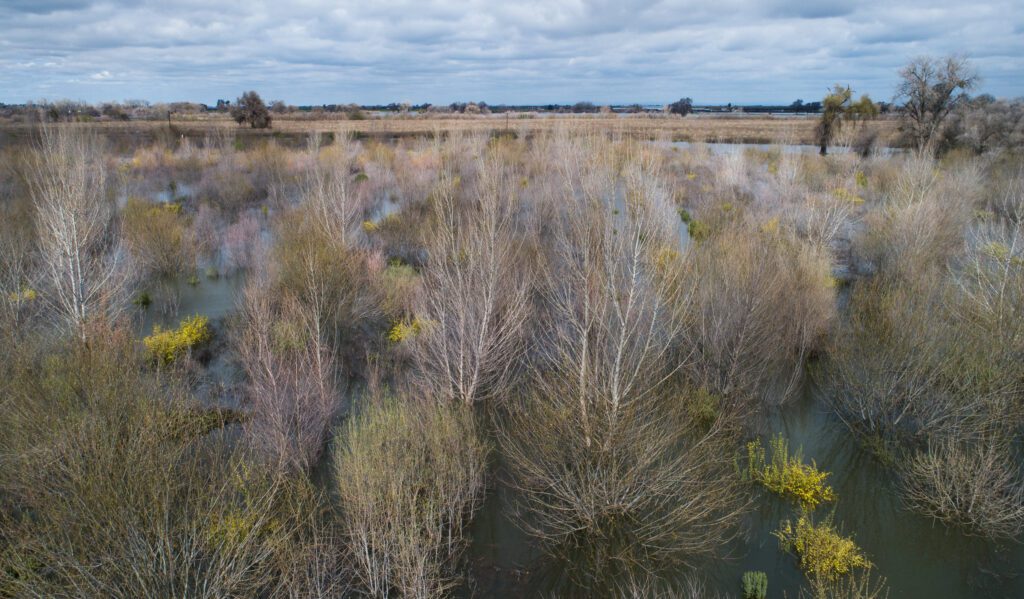
How does floodplain restoration help us through periods of drought and flood?
Julie: Essentially, floodplain restoration gives rivers more room.
What reconnected floodplains can do for people and for wildlife is this: floodplain soils get wet when the river spreads out and acts like a sponge.
So, restored floodplains can turn damaging flood flows into water storage assets simply by giving that water space and time to sink into the ground. Then, folks who rely on groundwater—like farmers and households—can use that water later.
Then, floodplains slowly, slowly drain the water back out into the stream. And in doing so, they keep the water a little bit cooler, and they make the water a lot cleaner.
Wildlife and communities seek refuge from the brutal summer heat in the cool shade of a river corridor or cool water in a stream. Our river corridors are essential heat refugia during extreme heat events. Reconnecting floodplains is one of the most important and promising nature-based solutions we have.
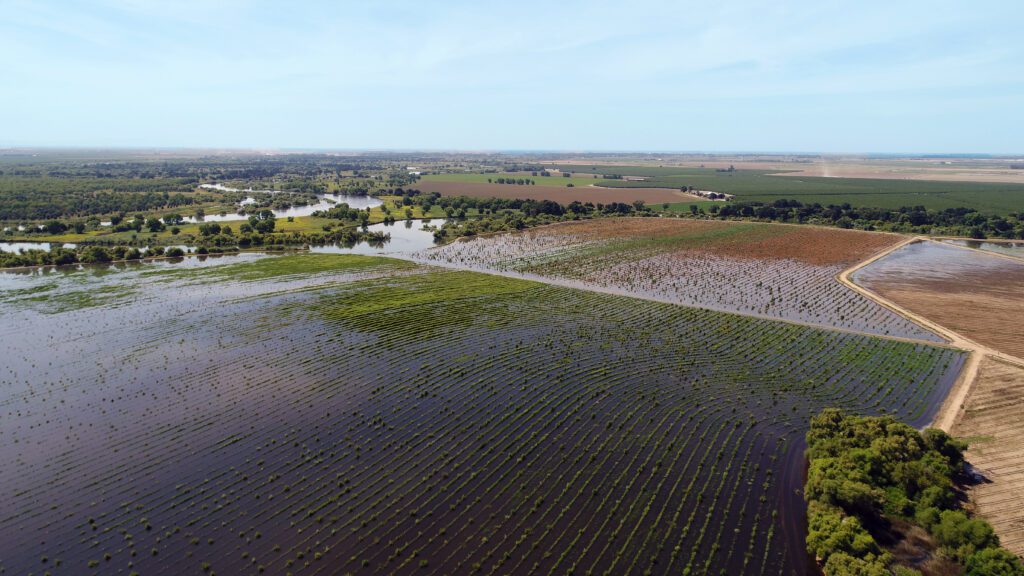
What’s the scale of floodplain restoration that’s needed?
Julie: We need to plan for a water system that can accommodate deluge and drought. We can minimize disasters, human suffering, and emergencies, but we need rejuvenated river corridors in the Central Valley, in particular the San Joaquin Valley, where they have been lacking for a long time.
There’s a lot of different ways we can think about restoration targets. But no matter how you look at them, the numbers from all sectors are pointing at a scale that’s much, much larger than what we’re able to do now. We need at least 100,000 acres of restored floodplain in the San Joaquin Valley to reduce water demand to a sustainable level, improve flood safety for Stockton and other vulnerable communities, and meet habitat targets for endangered wildlife. Some estimate we need 1 million acres.
The $40 million allocation in the state budget is transformational for the San Joaquin Valley, and the impacts will be felt by dozens of communities. At the same time, we consider the $40 million simply a downpayment on a 10-times-larger investment we’ll need by 2030.
But, I’m hopeful. If small organizations like River Partners with our mighty partnerships and community of restoration practitioners can deploy this $40 million immediately for over 2,500 acres of floodplain reconnection in the next few years, imagine what we could do if we could align the bulk of the weight of California’s enormous economy toward this problem.
Hopefully we’ll see the benefits of this $40 million and we will open the floodgates for more funding, so to speak.
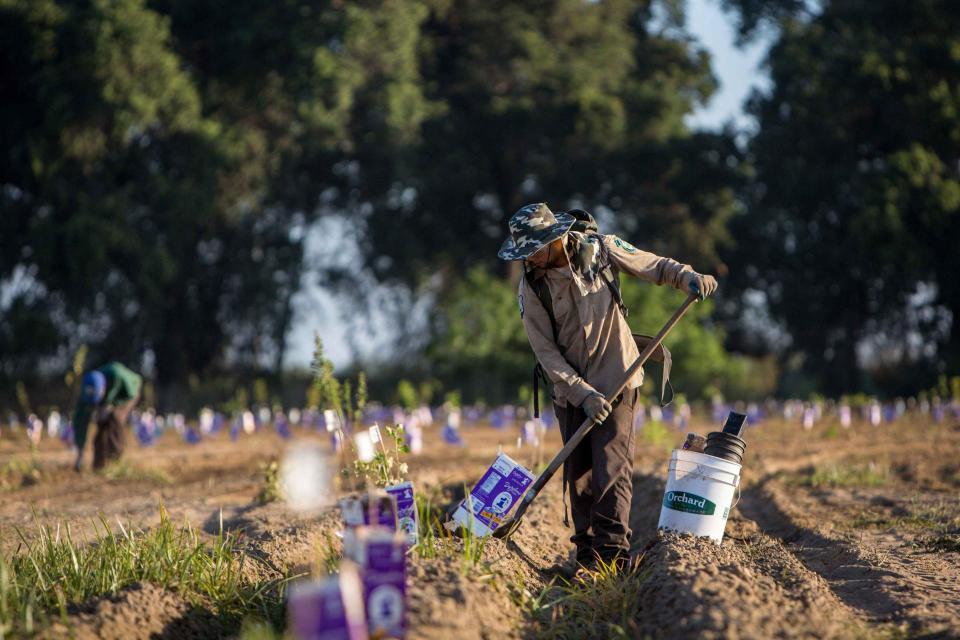
How are River Partners and our collaborators planning to spend $40 million on floodplain restoration right away?
Julie: With a one-time allocation of $40 million in funding for San Joaquin Valley that must be encumbered and spent within 3 years, River Partners plans to work with communities from Stockton to Bakersfield focusing on several key activities that advance a large set of specific projects with a broad group of partners:
- Floodplain Lands Acquisition – $18.4 million: River Partners hopes to acquire for public benefit 1,000 acres of primary river floodplain lands that can be restored to riparian floodplain habitat in the coming 6 to 9 months.
- Floodplain Restoration – $14.7 million: River Partners will work to reconnect rivers with their adjacent floodplains, restore native plants and trees, and create habitat that supports wildlife on an estimated 1,300 acres of lands already held in private and public conservation ownership.
- Research & Monitoring – $3.5 million: River Partners will support region-wide restoration planning and land repurposing efforts through critically needed research on geophysical mapping, quantifying how floodplains benefit groundwater recharge, and how studying how wildlife responds to flood and recharge flows.
- Planning and Permitting – $1.8 million: River Partners will work with many partners on permitting and planning for five additional floodplain restoration projects from Stockton to Bakersfield which are identified in regional planning priorities. Additional funding will be required to complete restoration on these projects.
- Habitat Maintenance – $1 million: River Partners will continue to remove non-native vegetation on more than 200 acres of floodplains in the upper and mid-San Joaquin River reaches.
- Multi-Benefit Project Development – $900,000: River Partners will work with more than 15 community partners to develop sufficient detail for new floodplain restoration projects to advance to funding eligibility from state and federal funding sources in the coming years.
In total, River Partners will directly restore and reconnect over 2,500 acres of San Joaquin Valley floodplains by 2026. In addition, research, planning, and development efforts will support the restoration of thousands of acres of floodplain habitat in the next decade. We hope to leverage this one-time investment for additional federal funding to keep up this momentum and make a significant positive impact on the water balance for ecosystems, communities, and growers in the valley.
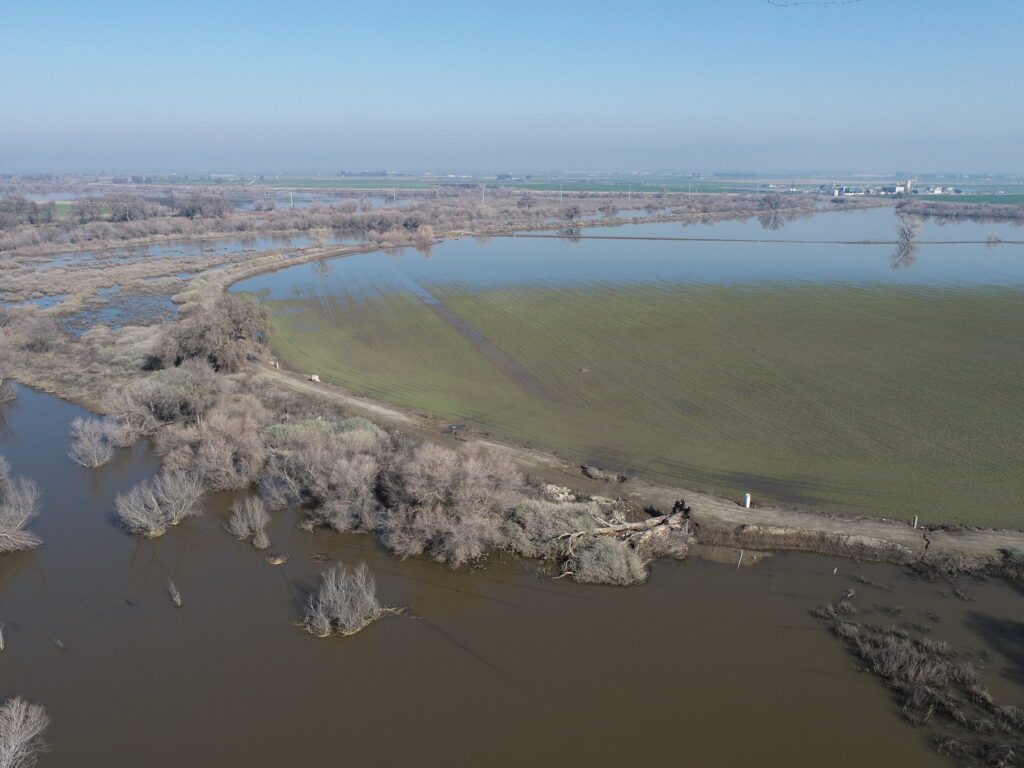
Crows Landing River Ranch, a historic floodplain adjacent to Dos Rios Ranch along the San Joaquin River, is one of the projects that will reconnect and restore 1,300 acres of floodplain with funding from the state budget.
Given the scale of what’s needed, is it possible to make a meaningful difference for California’s future?
Julie: River Partners turns 25 this year, and we are at an important inflection point. We have spent the last couple decades learning and proving what we can do. Now, we are turning towards the huge need ahead—scaling up this proven solution to meet the needs of California and its communities.
We have the tools in our toolbox to make a lasting impact. We have reliable ways of establishing native vegetation, and we know that when we’re successful in restoring habitat, wildlife comes back sometimes immediately.
We can restore floodplains, which ultimately is one slice of the pie of what’s needed. We can tell our story and inspire others to join us. Together, we can aim for the largest ecosystem restoration effort the United States has ever seen, expanding river corridors across the San Joaquin Valley to accommodate increased flood flows, recharge groundwater, provide space for recovering wildlife, and establish parks for people to enjoy the beauty and find refuge in the cool shade of the rivers.
We’re being called to do something really big here. We’re talking about billions of dollars of investment in expanding river corridors across the San Joaquin Valley from Bakersfield all the way to Stockton so we can accommodate the increased flood flows that are coming. So that we can recharge groundwater as quickly as possible. And so we can provide a space for recovering wildlife.
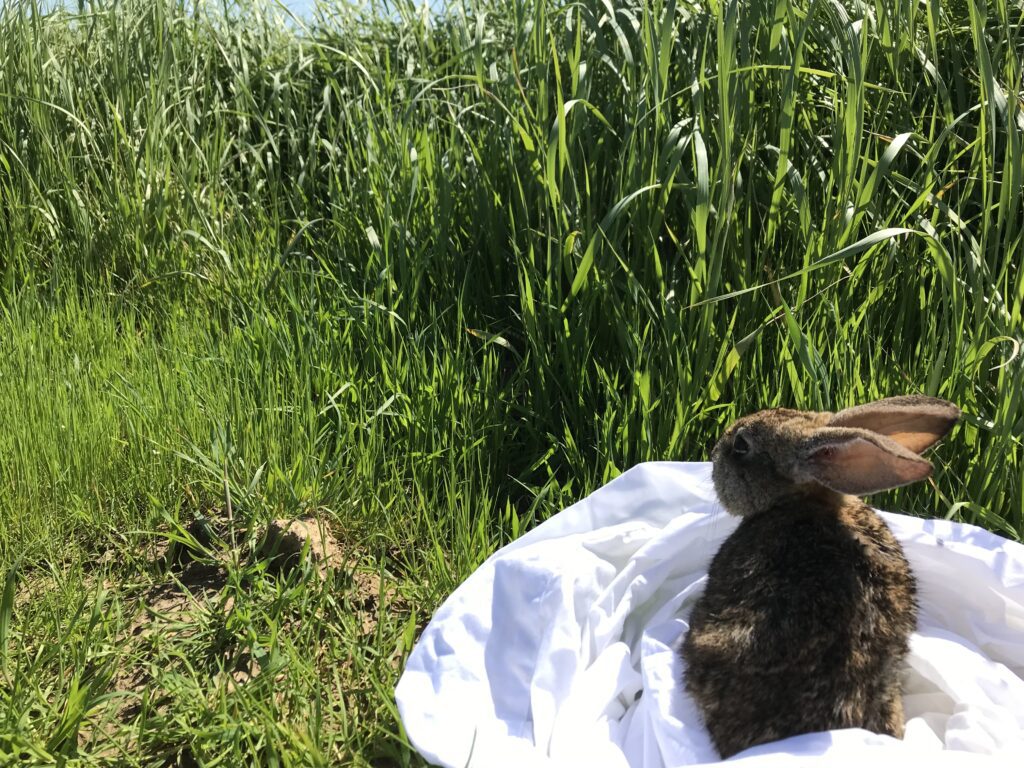
We have the support, the alignment. We all feel the same way about 95% of issues, right? We all want clean water; we all want clean air. We all want our kids to have a healthy life. There are so many things we all want that are the same. If we focus on that alignment and the outcomes, we can make really big change.

